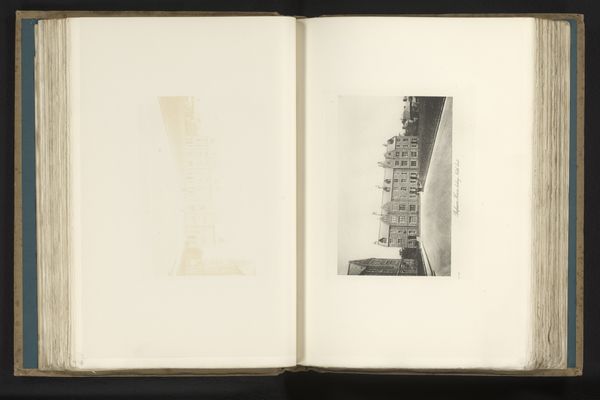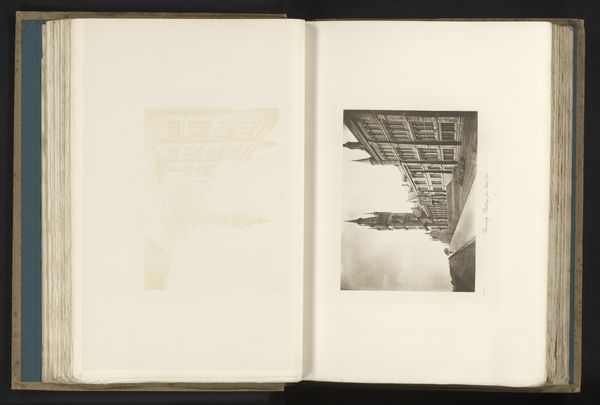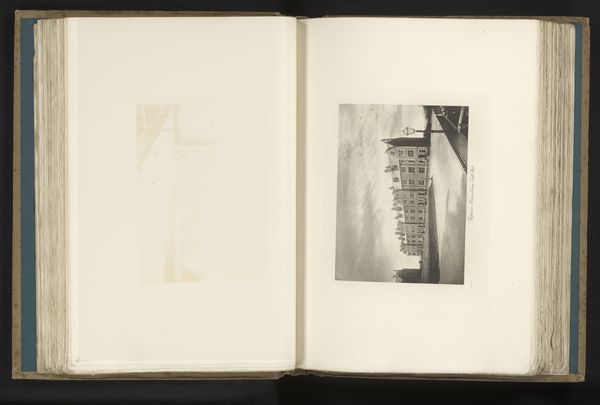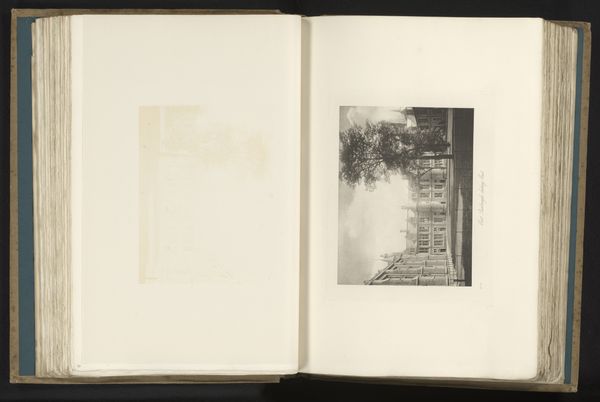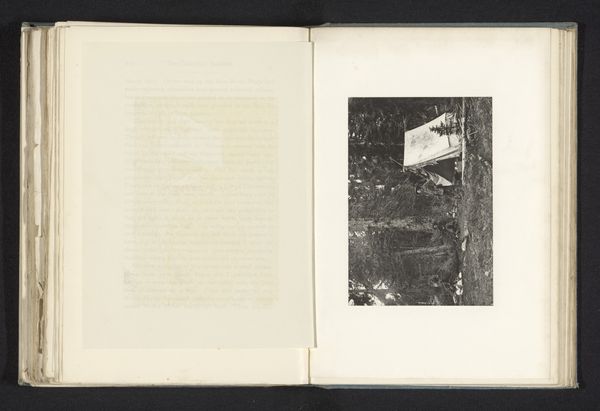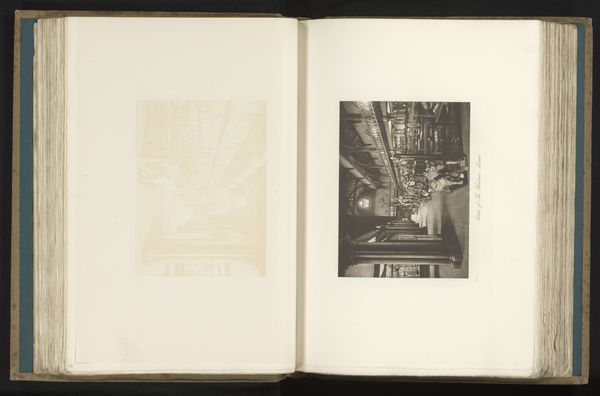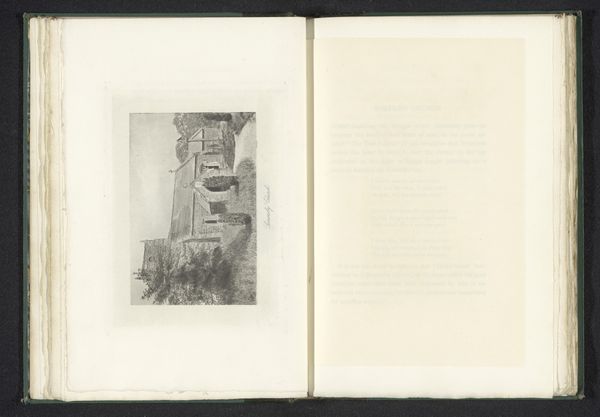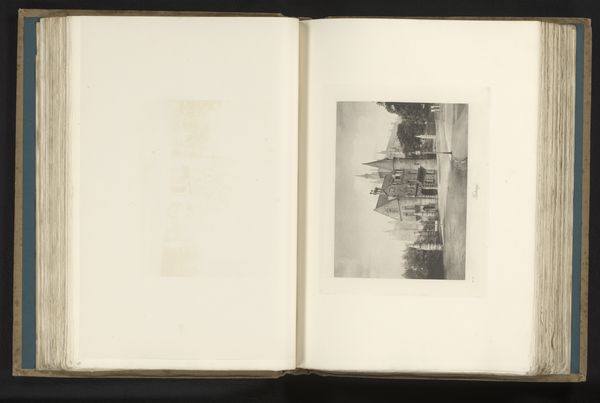
Binnenplaats van het Gilbert Scottgebouw van de universiteit van Glasgow before 1891
0:00
0:00
print, photography, site-specific, gelatin-silver-print, albumen-print, architecture
# print
#
landscape
#
photography
#
british
#
site-specific
#
gelatin-silver-print
#
albumen-print
#
architecture
Dimensions: height 139 mm, width 193 mm
Copyright: Rijks Museum: Open Domain
Curator: We have before us an early photograph, a gelatin-silver print of the Gilbert Scott Building at the University of Glasgow, taken before 1891 by an anonymous photographer. What are your initial thoughts? Editor: It's impressive. The sheer verticality dominates, creating a sense of awe. I immediately notice the texture of the stone—the sharp precision and its almost forbidding character, really— and its geometric structure overall, with repetitive pointed arches and spires puncturing the sky. It feels very controlled. Curator: Indeed. The formal organization is quite rigorous. Look at the photographer’s use of light and shadow to accentuate the building’s various planes and the careful framing, all enhancing this effect of architectural power. We must remember, too, the materiality of gelatin silver gives us a really durable high contrast print. The process becomes vital in creating these sharply defined textures and edges. Editor: It's interesting you say that, given that the use of stone—especially ornate, gothic-revival stonework—was not simply aesthetic but served a function. These were materials that signalled permanence and cultural authority, built using a workforce whose own physical efforts went into producing a place for elitist learning. It feels like there is almost a glorification of labor here, and the architecture is inherently linked to those production values. Curator: Well put. However, considering it formally, one can’t deny that the play of lines draws the eye upwards. Notice how the various horizontal strata, anchored by those imposing spires, creates a beautiful visual rhythm? The light itself is so integral to this sense of ascension—dare I say, almost an allusion to spiritual transcendence through architectural form? Editor: I still think its power cannot be separated from the historical context. The building embodies Victorian aspirations, literally constructed upon a belief in progress, social order, and class divisions maintained through architecture, not simply for aesthetics but also built environments fostering privilege and aspiration. Curator: Agreed. Perhaps it’s in navigating the complex tension of function and form, context and composition, that the essence of this artwork resides. Editor: Precisely, recognising that art can reflect, reinforce, or even subvert societal constructs and inequalities.
Comments
No comments
Be the first to comment and join the conversation on the ultimate creative platform.
